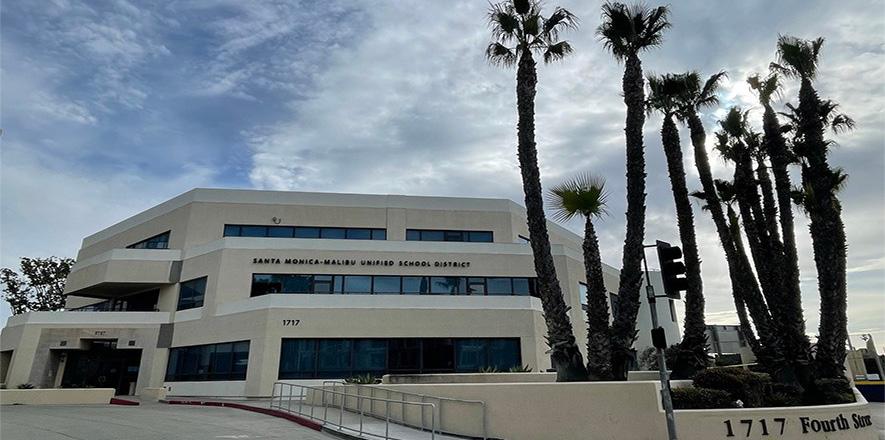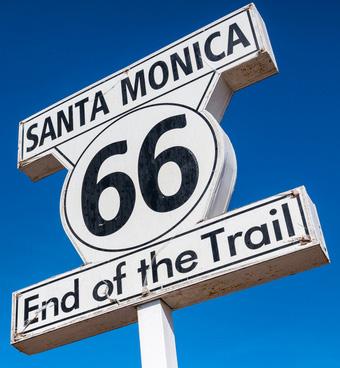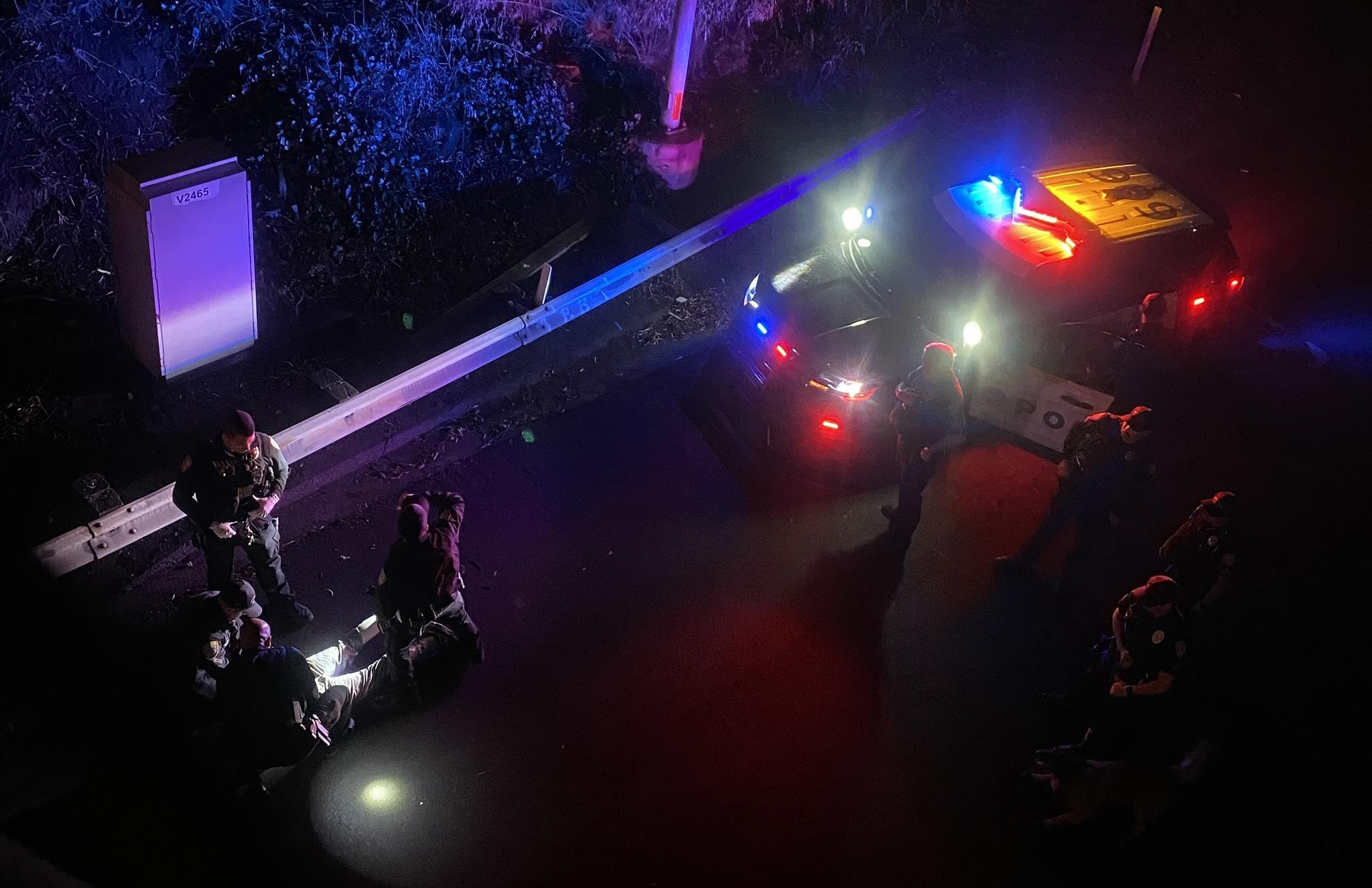




The families of four Pepperdine University students who were killed in a deadly accident on Pacific Coast Highway (PCH) in Malibu filed a lawsuit against state and local agencies. The lawsuits target the State of California, Caltrans, the California Coastal Commission, the County of Los Angeles, and the City of Malibu, claiming that these entities are responsible for the hazardous design of the roadway and their failure to implement life-saving safety measures according to a press release from the families’ law firms.
The tragic accident occurred on October 17, 2023, when Pepperdine seniors Niamh Rolston, Peyton Stewart, Asha Weir, and Deslyn Williams were
walking along the northbound shoulder of PCH near a stretch known as “Dead Man’s Curve.” A driver, Fraser Michael Bohm, who lost control of his vehicle, veered into the shoulder, first striking a parked car before fatally hitting the four students and injuring a fifth.
This specific .8-mile section of PCH, running from Las Flores Canyon Road to Carbon Canyon Road, is notorious for high-speed accidents. According to crash data from the Statewide Integrated Traffic Records System (SWITRS) and the Traffic Accident Surveillance and Analysis System (TASAS), 217 auto collisions were reported in this area between January 16, 2012, and July 26, 2023. Speeding was a factor in 64 of those incidents.
The lawsuit, filed on behalf of the families by Panish | Shea | Ravipudi LLP, Kramer Trial Lawyers APC, Ellis Riccobono, LLP, and BD&J, PC, claims that the defendants had long been aware of the dangers posed by this portion of PCH. In 2015, a Pacific Coast Highway Safety Study commissioned by the Malibu City Council identified 130 safety improvements needed to reduce accidents. Despite the allocation of over $28 million in funding, only

seven projects had been completed by November 2023.
The complaint points to a broader issue, citing Los Angeles County Sheriff Captain Jennifer Seetoo’s report, which notes that between 2013 and 2023, PCH in Malibu saw 3,345 vehicle collisions resulting in 53 deaths and 92 serious injuries. Over the past decade, 42,102 speeding tickets were issued along PCH in Malibu, but enforcement alone has failed to curb the danger.
“Pacific Coast Highway has been a death trap for decades,” tweeted Malibu resident Rob Lowe following a deadly crash in 2015 that claimed the life of rapper MC Supreme.
The attorneys for the victims’ families condemned the defendants’ inaction. “For far too long, PCH in
Malibu has been unsafe for pedestrians and drivers alike,” they said in a joint statement. “These lawsuits will force the defendants to take the actions they should have taken years ago to prevent further tragedies. Enough is enough.”
Representatives from Caltrans, Los Angeles County, and the state of California have not issued statements but, according to NBC Los Angeles, the city of Malibu issued a statement, which said in part, “We understand the legal actions filed by the families in their pursuit of accountability, and the city respects their right to seek justice ... The city of Malibu remains committed to collaborating with state and county agencies to expedite necessary safety improvements.”
Santa Monica has been named the most expensive city for businesses to operate in, according to the 2024 Kosmont-Rose Institute Cost of Doing Business Survey, released by Claremont McKenna College’s Rose Institute of State and Local Government. The annual survey, which analyzed a comprehensive set of cost-related factors across 216
cities nationwide, placed Santa Monica at the top, outpacing other high-cost cities in Southern California and across the country.
The study highlighted several key factors contributing to Santa Monica’s top ranking, including its elevated business license fees, utility taxes, and local sales taxes, which were found to be among the highest in the region. Commercial rents, which have consistently trended upwards in recent years, were another significant factor, with many business owners reporting that the high cost of leasing commercial space in Santa Monica has become unsustainable.
In addition to these local taxes and fees, Santa Monica’s high wage requirements, driven by both state mandates and local ordinances, further amplify the financial pressure on businesses.
The study also pointed to Santa Monica’s housing affordability crisis as
a major contributing factor to its high business costs. The city, like much of Southern California, has been grappling with a shortage of affordable housing, which in turn affects both employers and employees. For businesses, the lack of affordable housing means higher wage expectations as workers struggle to meet the demands of living in the area. This dynamic can also lead to high employee turnover and difficulty in attracting and retaining talent, adding to operational costs for businesses.
The Kosmont-Rose Institute report noted that nearly half of the 88 cities in Los Angeles County fell into the top tiers of business costs, with Santa Monica leading the pack.
Neighboring cities such as Culver City, Malibu, and Pasadena were also ranked in the top five most expensive, illustrating the broader challenges faced by businesses operating in Southern California.

Outside of California, the study compared Southern California cities to business-friendly regions such as Boise, Idaho, which ranked as the least expensive city in the country for businesses.
The Santa Monica-Malibu Unified School District (SMMUSD) and the City of Malibu have reached a critical point in their long-standing efforts to establish a separate Malibu Unified School District (MUSD).
Both parties’ subcommittees have agreed on a proposed school separation package, marking a significant milestone toward the goal of dividing the school district.
The package is now available for public review and consists of three key agreements: a Revenue Sharing Agreement, an Operations Transfer Agreement, and a Joint Powers Authority (JPA) Agreement.
The Revenue Sharing Agreement addresses the division of both existing and projected revenues between SMMUSD and the new MUSD, ensuring financial stability for both districts.
The Operations Transfer Agreement outlines how staffing, operational procedures, and resources will be allocated between the two entities.
The Joint Powers Authority Agreement establishes a shared governance structure responsible for implementing the provisions of the separation package.
Despite the complexities of the process, both SMMUSD and Malibu officials have remained dedicated to the goal of unification, guided by principles of fairness, equity, and local control in education. Jon Kean, SMMUSD School Board Vice President, expressed optimism about the agreements, acknowledging the work that remains but celebrating the achievement as a major step forward.
Malibu Mayor Doug Stewart echoed these sentiments, emphasizing that the new district would better serve the needs and values of Malibu’s community.
The agreements are expected to be finalized and approved by both the City of Malibu and the SMMUSD Board of

as early as November 2024. For more details go to: www.smmusd. org/MalibuUnification or https:// malibucity.org/musd.




















Monica Architects for a Responsible Tomorrow
By Michael Jolly
Over the past six months, Santa Monica has experienced a concerning rise in crime, sparking heated discussions about the future of public safety, tourism, and economic development in our iconic beachfront city. Although Santa Monica has long been known for its picturesque landscapes, thriving tourism, and cultural attractions, recent crime reports and local media have highlighted a troubling issue threatening Santa Monica’s reputation as a safe and vibrant community.
The candidates below for Santa Monica City Council, whom we wholeheartedly endorse, have prioritized safety. This is their main platform for immediate positive changes in our city!
Phil Brock, Mayor, and Council Member
Dr. Vivian A. Roknian
Oscar de la Torre, Council Member
John Putnam
A Snapshot of Recent Crime Trends
The last half-year has seen a noticeable uptick in several types of crime in Santa Monica, with property crime, vehicle theft, and petty theft being the most common. According to reports from the Santa Monica Police Department, thefts from vehicles, commercial burglaries, and shoplifting incidents have significantly increased, particularly in downtown areas and popular tourist destinations like the Santa Monica Pier and Third Street Promenade. Violent, shooting, and sex crimes, while less frequent than property crimes, have also increased and raised alarm, with several high-profile incidents making current headlines.
Residents and business owners have expressed growing concern over this trend, pointing to the need for more robust public safety measures and increased police patrols. Some have reported feeling less safe walking around downtown, particularly at night, as incidents of assaults and robberies have made some areas feel less secure than they did in the past.
Personally, I have had a few “close call” incidents in Santa Monica, and not all have been located downtown. The other day, we walked to the Promenade, planning a lunch at 1212 Restaurant. We were on Arizona Ave, between 16th and 17th St when we heard bloodcurdling screams and swearing, “Bitches Mother******!! I turned around, and there was a man about 25 feet away threatening to kill us, screaming you mother****, I will cut you and F*u all up
(I saw nothing in his hands, thankfully). An older woman was walking close to us, apparently in her eighties, physically frail, frightened, and trembling. I went over to her, put my arm around her, and tried to calm the situation while we all walked cautiously. I was thinking of calling 911, but fortunately, the whole thing passed without incident after that as the man ran away (our German Shepard was a good deterrent, perhaps), except this woman was on the verge of tears and said, “I wouldn’t have known what to do; I’m from Bakersfield!” Who knows what to do in these situations except to try and de-escalate and stay safe whenever possible? Unfortunately, this new reality and fear of unexpected crime and violence face and concern residents, and it’s only getting worse because it appears to me, based on numerous conversations with other residents, that so many incidents like these are not being reported.
The Impact on Tourism and Business Tourism has long been the lifeblood of Santa Monica’s economy, with millions of visitors flocking to the city each year to enjoy its sunny beaches, upscale shopping, and cultural events. However, a rise in crime could tarnish the city’s image as a safe destination, potentially deterring tourists from choosing Santa Monica over other Southern California cities. Many tourists may reconsider their travel plans if safety concerns are not addressed, mainly when violent crime or reports of theft dominate the headlines and social media.
Local businesses are also feeling the impact of these safety concerns. The bustling Third Street Promenade, once a prime shopping destination, has seen increased retail crime, leading some stores to invest more in private security or reduce operating hours. Vacancies remain high. For businesses already strained by the pandemic, these added costs and concerns could further hamper their recovery. Restaurants and small businesses that rely on a steady flow of foot traffic could see declining revenue if tourists and residents begin to avoid perceived dangerous areas.
A safe city that enforces the laws is the foundation for better and wellmanaged growth. It is foolish to continue densifying Santa Monica with large development projects without first and foremost addressing this critical issue.
Prioritizing Safety: A Must for our City’s Future and Economy
Public safety must become the city’s top priority for Santa Monica to thrive— both as a place to live and as a destination for visitors. The rise in crime is not just a short-term problem; if left unaddressed, it could have long-lasting effects on the city’s economy, reputation, and quality of life.
Here are some concrete steps our

candidates can take to make safety a central focus:
1. Increase Police Presence: A visible police presence is crucial in deterring crime and restoring public confidence. More patrols, particularly in high-traffic areas like the Pier, Promenade, and parks, can help prevent criminal activity and respond more quickly to incidents.
2. Community Policing Initiatives: Building more robust relationships between law enforcement and residents can help create a sense of shared responsibility for safety. Encouraging community policing initiatives, where officers engage directly with residents and business owners, can foster trust and cooperation in addressing crime.
3. Improved Lighting and Camera Surveillance: Enhancing lighting in public spaces and increasing the number of security cameras can make wouldbe criminals think twice before acting. Better visibility and real-time monitoring can help police respond more effectively to incidents.
4. Investing in Social Services: Crime is often linked to more significant social issues, such as homelessness, mental health, and substance abuse. By wisely investing in social services that correctly manage and address these underlying problems, Santa Monica can work to prevent crime from occurring in the first place. This includes expanding access to mental health resources, addiction treatment, and housing assistance for the city’s vulnerable populations.
5. Public Awareness Campaigns: Educating residents and tourists about safety measures, including how to protect themselves from theft or report suspicious activity, can empower the community to prevent crime proactively.
The Road Ahead
As crime rates rise, there is an urgent need for city officials, law enforcement, and community members to collaborate on solutions that restore
public confidence and ensure the safety of both residents and visitors. Santa Monica’s future as a thriving community and tourist destination depends on addressing these challenges head-on. By prioritizing public safety, the city can create an environment where people feel secure to live, work, and visit— ultimately encouraging more residents to stay, attracting more tourists, and helping businesses flourish.
The city has an opportunity to turn the tide and restore its reputation as a safe and welcoming community. Public safety must be recognized as the cornerstone of Santa Monica’s future success, ensuring it remains a top choice for residents, tourists, and businesses.
In addition to crime, traffic safety, and enforcement have emerged as critical issues that must be addressed to ensure the safety of the public and the city’s long-term growth. By making safety a central focus, Santa Monica can protect its residents, attract more tourists, and allow businesses to flourish.
In the long run, a safer Santa Monica means more residents staying in the city, more tourists visiting, and more businesses succeeding. The path to a brighter future begins with making public and traffic safety non-negotiable, ensuring that the town remains a thriving coastal gem.
More to follow regarding traffic safety and enforcement in next week’s article.
Michael Jolly for SMa.r.t.
Santa Monica Architects for a Responsible Tomorrow
Samuel Tolkin, Architect & Planning Commissioner; Thane Roberts, Architect; Mario Fonda-Bonardi AIA, Architect; Robert H. Taylor AIA, Architect; Dan Jansenson, Architect; Michael Jolly, AIR CRE; Marie Standing, Jack Hillbrand AIA, Architect
For previous articles see www. santamonicaarch.wordpress.com/writing




A Van Nuys man is being held on more than $4 million bail after being charged with attempted murder in a weekend shooting on Ocean Avenue. The suspect, identified as 19-year-old Isaac Santiago Ramos, was arrested early Sunday morning following a shooting that left a 24-year-old man seriously injured.
According to the Santa Monica Police Department, officers responded to a call at approximately 1:30 a.m. on September 8, after a friend of the victim reported that the suspect shot the victim multiple times before fleeing. Officers arrived at the 1900 block of Ocean Avenue within minutes and detained several individuals attempting to leave the scene. Ramos was among those detained and was found in possession of a concealed handgun.
Witnesses said that Ramos and four other men had approached the victim’s

friends on the beach near the 2000 block. An argument broke out, and when the victim intervened, Ramos allegedly shot him several times. The victim was transported to a nearby hospital and remains in serious but stable condition.
Ramos was arraigned on September 10 and faces multiple charges, including attempted murder, mayhem, carrying a concealed firearm, carrying a loaded firearm, and resisting arrest. His bail has been set at $4,105,000.


Sauvignon and Syrah has expanded into three distinct vineyards, producing Bordeaux-style blends, Sauvignon Blanc, and other varieties.


AJA Vineyards, a Malibu-based family winery, is opening its first tasting room in downtown Santa Monica. The tasting room, located at 1417-C 2nd Street, will host a grand opening event from October 9 through October 13.
AJA Vineyards was founded by Todd and Heather Greenbaum in the Santa Monica Mountains. The family has been dedicated to crafting wines that reflect the unique terroir of Malibu since planting their first vines in 2007. What began as a small vineyard producing Cabernet
The Greenbaum family’s passion for wine extends to their eldest daughter, Amanda, who now runs the operation. Amanda, a Certified Sommelier and UCLA graduate, took an early interest in wine, working alongside her father in the vineyards from a young age. She has since traveled the world, studying winemaking and interning with renowned wineries, bringing global expertise to AJA Vineyards.
Despite challenges like the 2018 Woolsey Fire, which threatened their estate, AJA Vineyards has thrived, producing wines celebrated for their quality and distinct Malibu Coast character. Their flagship wines, including their Syrah from “Pamela’s Vineyard” and the Bordeaux blend from “Miracle Vineyard,” are named in honor of family members.



